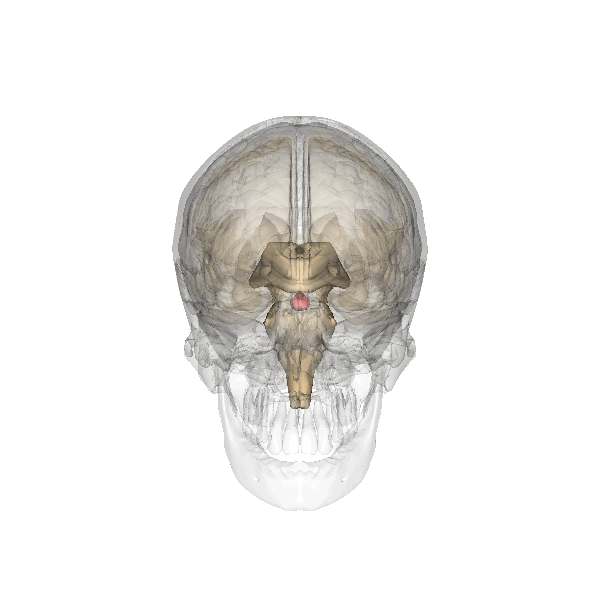Pituitary gland

The pituitary gland is an organ or a gland that is located under the brains. In the picture above, it is the little red spot behind the eye sockets. The pituitary gland has the size of a pea. However small, it is often called the most important gland of our body.
The pituitary gland is divided into lobes.
The adenohypofyse or anterior lobe and the neurohypophysis or posterior lobe.
The pituitary gland produces several hormones, nine types, and steers hormone-producing glands elsewhere in the body. Hormones are released into the blood and regulate many functions in the body. For example, growth hormones, sex hormones, thyroid hormones and stress hormones. If a rise of a given hormone is observed in the blood, the production of this hormone is immediately inhibited.
It is therefore understandable that injury in this organ has direct consequences for the functions elsewhere in the body. The most common problem with the pituitary gland occurs when a benign tumor develops (often referred to as adenoma or craniofaryngeoma). Malignant tumors can occur but are rare. Also rare are traumatic injuries or pituitary infarction.
The following symptoms may be noticeable:
(not for everyone, each person is different, every injury is different)
- emotional behavior
- irritable, without being able to do something about it
- mood swings
- depressive moods
- decreased sexual drive
- impaired concentration
- overstimulation, sensitive to external stimuli
- memory problems
The following hormones are produced by the pituitary gland:
- Adrenocorticotropic hormone (ACTH), also known as corticotropin
Tumor in the pituitary gland (adenoma or craniofaryngeoma)
Symptoms of a craniofaryngeoom may include: headache, blurred vision, double vision, sometimes visual impairment or blindness, (pressure on the optic nerves) to a hormonal deficiency, abnormal fatigue, poor recovery from fatigue, depression, emotional responding, reacting irritable, joint problems, Lack of puberty, weight problems, eating disorders, problems with fat metabolism and heart function. Read more
Also, tumors in the vicinity of the pituitary gland may put pressure onto the pituitary and thereby distort the function. Apart from the brain tumor, the cavities may be flared in that the cerebrospinal fluid can hardly be discharged.
Read more about the hypothalamus
Read more about the pituitary gland: The pituitary foundation
Resources: Images are from Anatomography maintained by Life Science Databases(LSDB). 日本語: 視床下部。
